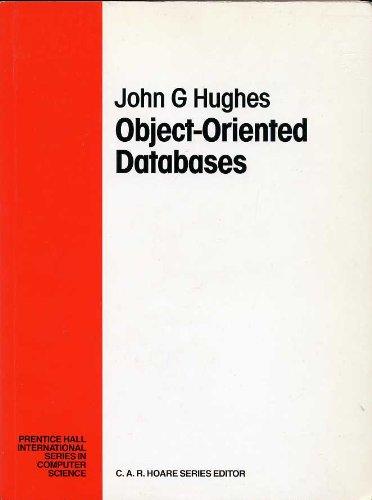Question
1.please write your code in c 2. your code will be judged by loader code 3. make sure to pass the test case Zoro has
1.please write your code in c
2. your code will be judged by loader code
3. make sure to pass the test case
Zoro has got a treasure map which tells the place of a legendary sword was hidden. But Zoro has poor sense of direction that makes him gets lost easily. Luckily, There is a map app in his PDA that can digitalize treasure maps and provide a path to the treasure, thus, Zoro could move along the instruction given by the PDA. But the app is non-functional due to missing required library. Please help Zoro fix the issue.
There are three functions should be implemented:
init_node(): Init the given node with provided id and paths start from the node.
step_to_next() : Step from the curr node to the next node along the next_idxth path of the node.
deinit_node(): Free the allocated space of given node.
Input
First line contains an integer N that indicates the number of nodes of the map.
The next N lines have the information of the nodes, each line is in the format "id pidx_1 ... pidx_n -1" where "id" is the name of the node, followed by a negative-one-terminated list of integers that means there is a path between the current node and the "pidx_i"th node.
Next line contains an integer S indicates the index of the start node.
The last line is a negative-one-terminated list of integers where the ith integer means that the ith path of the current node is the correct one.
Output
ID of each node along the path, each ID occupies a line.
Loader Code
Your code will be judge using this program:
#include
#include
#include
#define MAX_ID_LEN 32
#define MAX_PATH_CNT 16
typedef struct node_s {
char *id;
struct node_s **paths;
} node_t;
typedef struct map_s {
unsigned node_cnt;
node_t *nodes;
} map_t;
map_t *build_map();
void destroy_map(map_t *map);
void init_node(node_t *node, const char *id, node_t *paths[]);
void deinit_node(node_t *node);
node_t *step_to_next(node_t *curr, int next_idx);
int main()
{
map_t *map = build_map();
int start_idx;
scanf("%d", &start_idx);
node_t *curr = &map->nodes[start_idx];
while (curr) {
int next_idx;
scanf("%d", &next_idx);
curr = step_to_next(curr, next_idx);
}
destroy_map(map);
return 0;
}
map_t *build_map()
{
map_t *map = malloc(sizeof(map_t));
scanf("%d", &map->node_cnt);
map->nodes = malloc(sizeof(node_t) * map->node_cnt);
int max = 0;
for (int i = 0; i < map->node_cnt; i++) {
char id[MAX_ID_LEN + 1];
node_t *paths[MAX_PATH_CNT + 1];
scanf("%s", id);
int curr_idx = 0, path_idx;
while (scanf("%d", &path_idx), path_idx != -1) {
paths[curr_idx++] = &map->nodes[path_idx];
}
paths[curr_idx] = NULL;
init_node(&map->nodes[i], id, paths);
}
return map;
}
void destroy_map(map_t *map)
{
for (int i = 0; i < map->node_cnt; i++)
deinit_node(&map->nodes[i]);
free(map->nodes);
free(map);
}
Example 1
Input
9
Laibin 3 4 6 8 1 -1
Guayaquil 2 5 3 8 7 -1
Kaifeng-Chengguanzhen 8 1 3 0 4 7 6 -1
Mexico-City 0 -1
Xianyang 1 -1
Malang 2 3 4 0 1 8 7 6 -1
Yingchuan 7 2 -1
Sale 4 5 8 1 2 3 0 -1
Libreville 7 2 3 5 6 1 0 4 -1
3
0 0 0 0 0 3 4 1 -1
Output
Mexico-City
Laibin
Mexico-City
Laibin
Mexico-City
Laibin
Libreville
Yingchuan
Kaifeng-Chengguanzhen
Example 2
Input
5
Yibin 1 2 -1
Ciudad-Guayana 3 0 -1
Varanasi 3 0 -1
Jamestown 1 4 0 2 -1
Hejian 3 -1
2
0 0 1 1 -1
Output
Varanasi
Jamestown
Ciudad-Guayana
Yibin
Varanasi
Example 3
Input
7
Dazhou 1 2 4 3 6 -1
Dingxi 2 4 -1
Bangalore 5 6 4 0 1 -1
Shiyan 5 2 4 6 0 1 -1
Yuci 2 0 -1
Bangui 1 3 -1
Laibin 0 3 -1
4
1 2 0 3 1 -1
Output
Yuci
Dazhou
Yuci
Bangalore
Dazhou
Bangalore
Example 4
Input
6
Joao-Pessoa 3 5 -1
Rome 0 2 4 -1
Giza 0 1 4 5 3 -1
Cairo 4 5 0 1 -1
Yulinshi 0 1 -1
Guiping 4 0 2 3 -1
1
0 1 -1
Output
Rome
Joao-Pessoa
Guiping
Step by Step Solution
There are 3 Steps involved in it
Step: 1

Get Instant Access to Expert-Tailored Solutions
See step-by-step solutions with expert insights and AI powered tools for academic success
Step: 2

Step: 3

Ace Your Homework with AI
Get the answers you need in no time with our AI-driven, step-by-step assistance
Get Started


